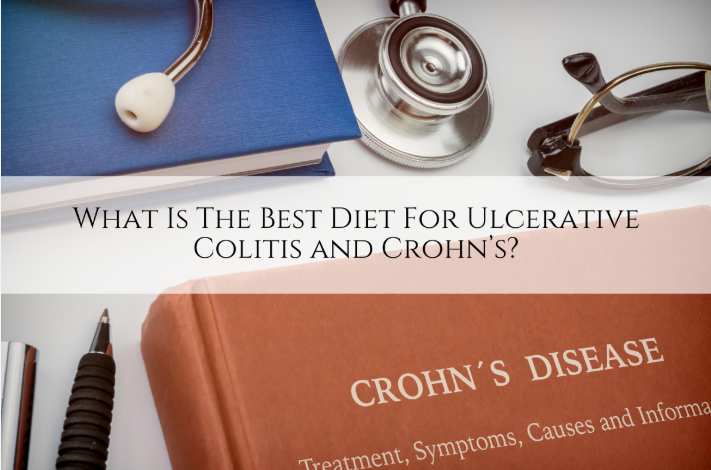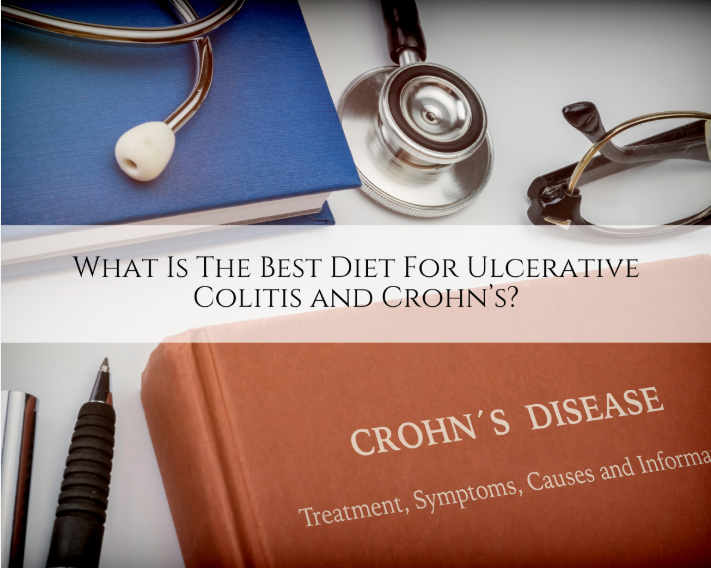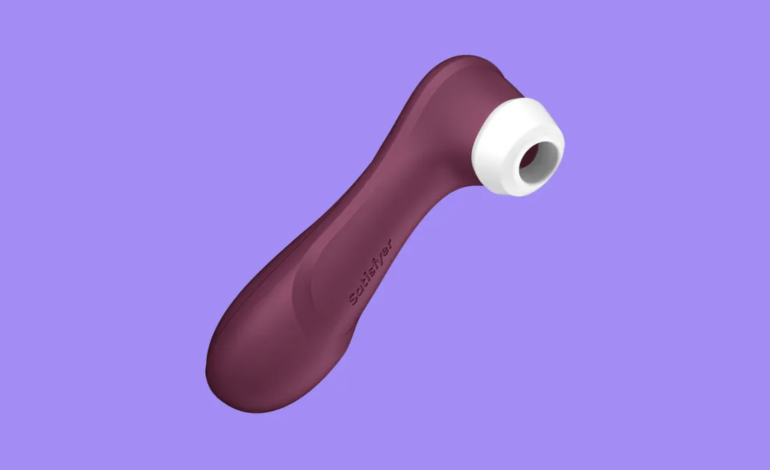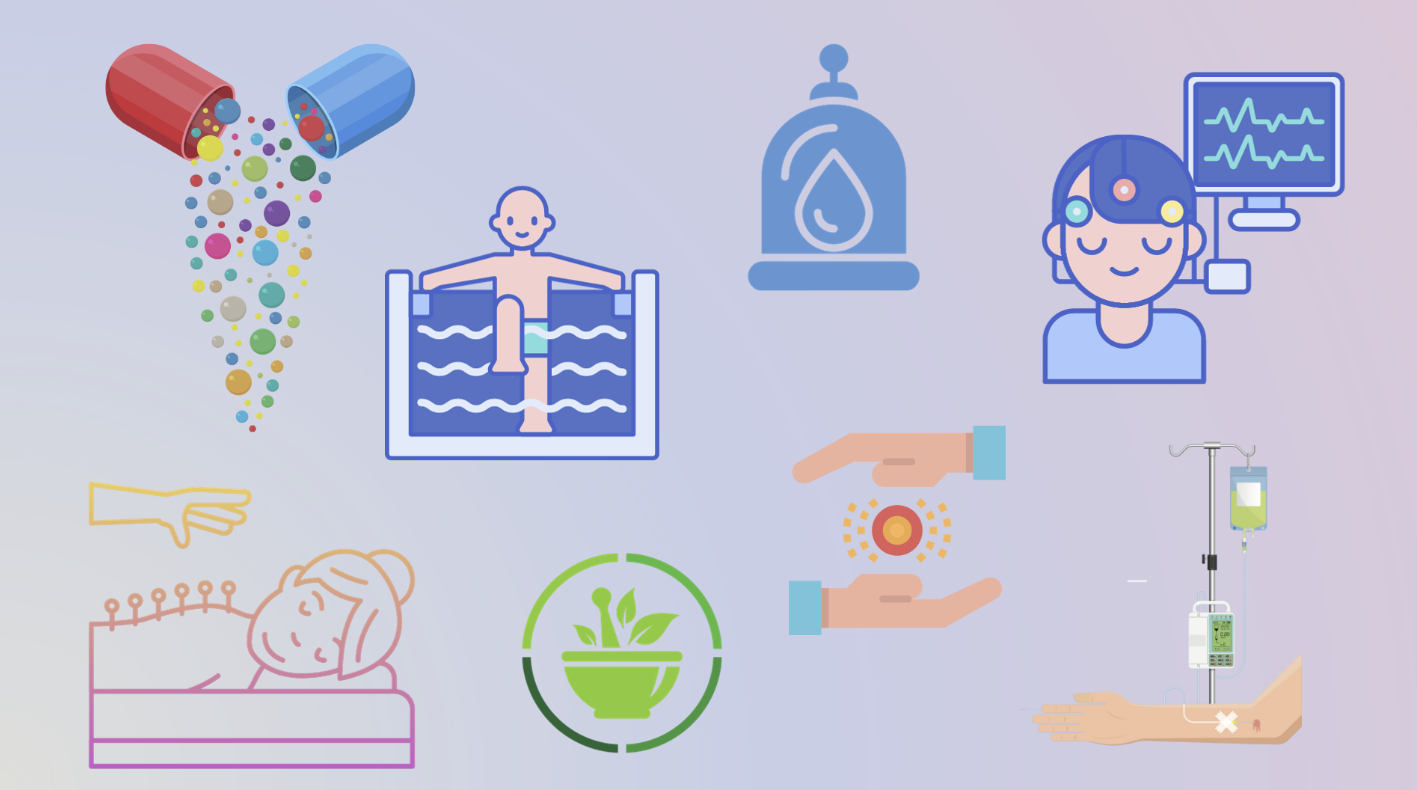
What Is the Best Diet for Ulcerative Colitis and Crohn’s Disease?

What’s the Best Diet for Ulcerative Colitis and Crohn’s Disease?
Many patients ask, “What’s the best diet for Crohn’s disease and ulcerative colitis?” This is a great question because diet plays a key role in managing both of these conditions. However, there’s no one-size-fits-all answer. The ideal diet varies based on individual symptoms and other health factors.
In this article, I’ll explain why diet is so important for people with ulcerative colitis and Crohn’s disease, look at some common diet plans that patients follow, and offer guidance on how to determine which diet works best for you. Whether you’re newly diagnosed or have been living with these conditions for years, this guide will help you make informed dietary choices to alleviate symptoms and improve your health.
Understanding Ulcerative Colitis and Crohn’s Disease
Ulcerative colitis and Crohn’s disease are both chronic inflammatory bowel diseases (IBD) that affect millions of people worldwide. While both cause inflammation in the digestive system, they differ in where the inflammation occurs. Ulcerative colitis primarily affects the colon and rectum, causing inflammation and ulcers, whereas Crohn’s disease can affect any part of the digestive tract, from the mouth to the anus.
Living with either condition can be difficult, as inflammation in the gut can cause symptoms like abdominal pain, diarrhea, fatigue, weight loss, malnutrition, rectal bleeding, and a lack of appetite.
Why Diet Matters for Ulcerative Colitis and Crohn’s
Many people with gut issues suspect that certain foods may be contributing to their symptoms, but it’s not always clear which foods are to blame. While traditional medical doctors may downplay the impact of food on IBD, functional medicine takes the opposite approach, recognizing that diet can play a critical role in gut health.
In my experience, diet has a direct impact on the severity of symptoms, disease progression, and nutrition for people with ulcerative colitis and Crohn’s. Patients often face challenges like:
- Food sensitivities: An immune reaction to certain foods can trigger inflammation, particularly in the gut, leading to a cycle of immune responses that worsen symptoms.
- Food intolerances: These are digestive problems, such as lactose intolerance, where the body struggles to break down certain foods. For example, someone with lactose intolerance may experience diarrhea and cramping after eating dairy.
- Nutrient absorption issues: Inflammation can make it harder for your body to absorb essential nutrients, and certain foods, like grains and legumes, contain compounds that can interfere with absorption. For instance, lectins found in these foods can block the absorption of nutrients like calcium, iron, and zinc.
Common Diets for Ulcerative Colitis or Crohn’s Disease
The best diet for someone with ulcerative colitis or Crohn’s depends on many individual factors, but there are some common diets that may help. Let’s look at a few of these:
Specific Carbohydrate Diet (SCD)
The Specific Carbohydrate Diet eliminates hard-to-digest carbohydrates, such as grains and certain beans. It became popular in the 1980s after Elaine Gottschall’s book, which described how the diet helped her daughter with inflammatory bowel disease (IBD).
This diet is based on the idea that people with ulcerative colitis and Crohn’s have difficulty breaking down certain carbohydrates. Undigested food can remain in the intestines, where bacteria feed on it and grow out of control. This leads to inflammation and damage in the gut. By avoiding difficult-to-digest carbs, the SCD aims to prevent harmful bacteria from thriving and causing further damage.
Low FODMAP Diet
Similar to the Specific Carbohydrate Diet, the Low FODMAP diet eliminates certain hard-to-digest carbohydrates known as FODMAPs (Fermentable Oligosaccharides, Disaccharides, Monosaccharides, and Polyols). These carbs are easily fermented by gut bacteria, which can lead to irritation and inflammation. The Low FODMAP diet helps starve harmful bacteria and gives the gut time to heal.
A functional medicine provider can help you identify which specific foods to avoid on a Low FODMAP diet. Generally, high FODMAP foods include legumes, processed meats, dairy (except for certain cheeses), grains, and fruits like apples, watermelons, and bananas. Low FODMAP options include grapes, strawberries, pineapples, eggs, and tofu.
Autoimmune Protocol (AIP) Diet
The AIP diet is designed to reduce inflammation by eliminating foods that are known to trigger immune responses, including grains, legumes, nuts, seeds, nightshades, eggs, dairy, alcohol, coffee, and sugars. It encourages the consumption of fresh, nutrient-dense foods, such as unprocessed meats, fermented foods, and bone broth. Many people with ulcerative colitis or Crohn’s report feeling better on this diet due to its focus on reducing gut inflammation.
What’s the Best Diet for Ulcerative Colitis and Crohn’s?
The best diet for you is personal. Every person’s body is unique, and what works for one individual may not work for another. That’s why it’s important to create a diet plan tailored to your specific symptoms and health history.
At our practice, we start by reviewing a patient’s health history and asking them to complete a questionnaire to help us understand their predominant symptoms. For example, if we suspect small intestinal bacterial overgrowth (SIBO) based on symptoms like bloating, we might lean toward the Low FODMAP diet. On the other hand, if a patient has ulcerative colitis or Crohn’s but no symptoms of SIBO, we may try the Specific Carbohydrate Diet (SCD) first.
Once we have this initial information, we customize the diet plan. After reviewing lab results, we refine the plan to target specific food sensitivities or imbalances. We may also combine approaches, such as using a modified SCD, if necessary. Over time, as symptoms improve, our goal is to gradually reintroduce more foods to ensure a diverse and balanced diet that supports a healthy gut microbiome and gut lining.
Do You Have to Stay on an Autoimmune Disease Diet Forever?
The goal isn’t to keep you on a restrictive diet for life. If a patient starts with a Low FODMAP diet and their symptoms improve—such as feeling less bloated, having better digestion, and more regular bowel movements—we may begin to reintroduce higher FODMAP foods to expand their diet.
These diets are tools for identifying the root causes of your symptoms—whether that’s food sensitivities, intolerances, or gut issues like leaky gut. By addressing the root cause, we aim to resolve the inflammation and help you return to a more varied and sustainable diet.
However, some foods—particularly gluten and sugar—can be problematic for people with ulcerative colitis or Crohn’s. While most people can occasionally tolerate small amounts of these foods when their condition is stable, they should still be limited.
Here’s a quick summary of how we approach diet at Caplan Health Institute:
- Assess the patient’s symptoms and health history
- Identify which foods cause the most problems
- Start with a customized diet to eliminate the worst offenders
- Gradually reintroduce foods as symptoms improve
- For foods that still cause issues, determine the underlying cause and work to fix it.




